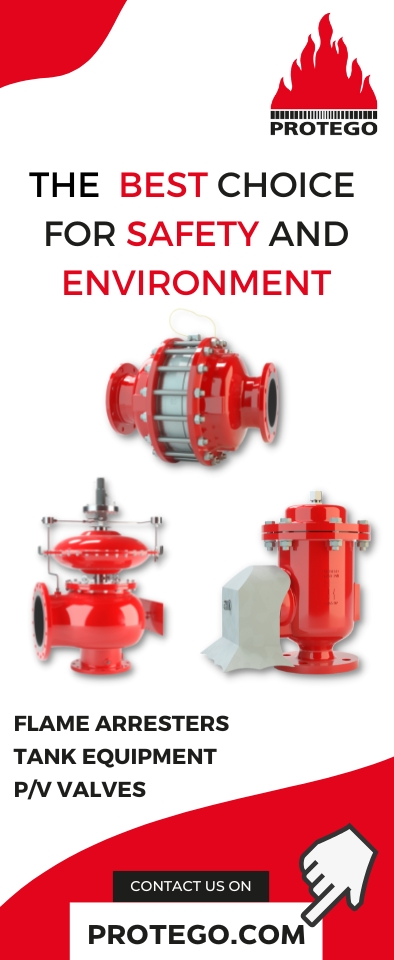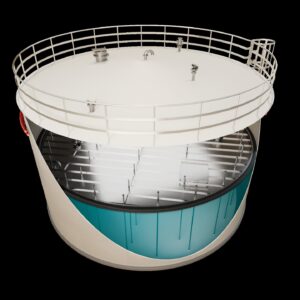A successful digital transformation requires the repositioning of IT in the organisation; IT must evolve from a cost centre into an integral part of the value chain. Many asset-heavy companies transform into technology companies, where data drives customer experience and allows the creation of new business models. As a result, many formerly outsourced or bought-in IT functions and solutions are brought in-house.
Vopak is a 406-year-old Dutch company which has grown into the leading independent provider of liquid bulk storage. Vopak is active in 73 terminals in 23 countries across the world and generates revenues of €1.2 billion (excluding joint ventures). When I joined Vopak in 2014 as chief information officer (CIO), I kickstarted an ambitious and successful digital transformation. Vopak has now become the poster child for digital transformation in the Netherlands, and for its industry globally. The company rolled out Industrial Internet of Things (IIoT) solutions, automated its port operations with bespoke robot and drone designs, infused its processes with end-to-end data gathering and processing capabilities, and significantly altered the ways it sourced, produced and serviced IT and operational technology.
IMPROVING SAFETY AND EFFICIENCY
One of the digital transformation goals was to improve the safety and efficiency in the harbour and terminal operations. Vopak made significant progress towards it. It can now conduct storage tank corrosion inspections by flying autonomous drones that are equipped with AI and machine vision software over our harbour infrastructure – previously, it needed human inspection teams to walk around and climb into the storage tanks. Their new way of working is more safe and efficient. They are also building and testing robots that go inside the tanks to inspect and clean them.
The aim is to replace the need for humans to enter confined spaces like tanks making things safer for our staff and contractors. The COVID-19 situation necessitated remote working, and this has undoubtedly accelerated many processes which are moving towards the automation of functions that a few years ago we believed only humans could do. People now recognise that tasks can be done remotely without sacrificing efficiency or productivity.
DECIDING TO BUILD TECHNOLOGY IN-HOUSE
The technology services and products that we build ourselves cover all the processes that allow us to strategically differentiate our services to the customer. These services are focussed on the storage of large quantities of chemicals, gas, oil and vegoils in the harbours. We do not build the technology for processes that do not differentiate our services; for example, we use an Oracle SaaS platform for finance and procurement. However, even when we do not build the tech ourselves, we still work to improve the technology in these departments. In finance, we centralised financial activities through global standardisation using a SaaS solution, and deployed software robots to automate much of the admin work. This meant that we were able to reduce costs.

Our logistics services are linked to operational bulk storage with different modes of transport such as train, ship, barge and truck; and we provide additional services on top of the existing ones. This is where we design and develop the technology in-house; This thinking about differentiation drives our choices relating to converged IIoT architecture. We needed much more flexibility and adaptability in our architecture for our digital transformation strategy to succeed. Moreover, there will always be new players with newer and different architectures, making it harder to compete with legacy architectures.
Therefore, we made the bold decision to phase out our industry standard enterprise resource planning (ERP) system, JD Edwards, and developed our own software on a rapid application development (RAD) platform from Outsystems for these processes, where we differentiate our services from our competitors. This was not easy, but the architecture has been conducive to our commercial success and competitive differentiation over the last few years.
There are many parties required to make operational bulk storage happen, and data exchange is necessary to make that work. We use data to set up platforms which will allow for seamless interaction between industry players and can lead to significant cost savings.
The interactions between parties in our business can be very old-fashioned, with some still using fax machines. We have a vision of how our platform should evolve in 2022. It will be community-based, instead of a single large technology company collaborating with a large global logistics player on a platform that functions as a toll bridge for all other competitors in the sector. Nobody would feel secure managing their own data through a platform owned by another company.
In the end, people across our sector trust us to store their products and data. We run our business independently, invest in digital technologies and link all parties – from transporters to stakeholders such as customs brokers, banks and insurance companies – into our real time data streams.
INVESTING IN START-UPS
Over the last five years, we have started to engage with start-ups and scale-ups, and we created a corporate venture capital (CVC) fund. For instance, we invested in TWTG, which makes sensors that we believed to be ideal for our digital strategy. We made a minority investment in the company to ensure they would be in business for the long term, allowing us the necessary time and resources to actively provide strategic guidance. In this way, we helped them to enter the industry and understand the challenges.
CVCs are a highly effective means to drive change. Traditional companies are afraid to lose money and cannot see the value of potentially hitting a home run with investments in strategic technologies. These initiatives also become visible to the employees in the company, encouraging them to take entrepreneurial initiatives.
Smaller suppliers are becoming much more attractive and more powerful. One of our long-time suppliers, a large blue-chip company, asked us why we made that investment in a start-up, instead of collaborating on sensors with them. We told the company that we had asked them repeatedly for two years, but never got a clear answer. Today, they want to become a reseller of the product. This is an illustration of how existing technology players need to change the way in which they conduct business.

A CLEAR DIGITAL STRATEGY
Over the past five years, we have set a very clear digital strategy that everyone across the organisation can understand, and which we execute with all employees in the company aligned. The IT department has grown since then, and its composition has changed dramatically to reflect the new competencies required. One fact about the digital talent market is there is a huge imbalance between supply and demand, so some things need to change. Our first struggle was to have business people across the organisation understand the value of IT, and establish clarity on governance, roles and responsibilities.
Because the impact of the IT transformation was so dramatic, business people now ask to join IT meetings, and IT staff join client meetings on a very senior level. The discussions no longer focus on price, but on the value that the data generates and the digitalisation challenges that come with it. With our data, our clients can make massive savings in their supply chain, and once real time data becomes available in the future, AI might take over the planning challenges in the global supply chain.
We consider this cross-fertilisation of knowledge across business functions to be a very healthy indicator that our digital transformation strategy is working.
For more information:
Brand will give a presentation at StocExpo 2022, which will be held from 23-25 May 2022 in Rotterdam, the Netherlands.











